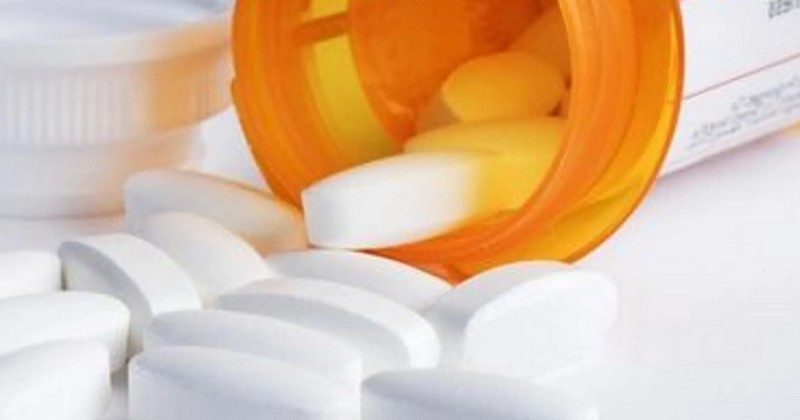Phenaglycodol: uses and side effects of this drug.

A type of anxiolytic psychotropic drug. Let's see what its effects on the brain are.
Phenaglycodol is an anxiolytic, hypnotic and sedative drug, very similar to meprobamate.very similar to meprobamate. Meprobamate forms, together with benzodiazepines and barbiturates, the only group of anxiolytics that also have hypnotic and sedative effects.
In this article we will learn about some of the characteristics and properties of phenaglycodol, from which other substance it is derived and what its effects are. Finally, we will talk about other anxiolytics, and the similarities and differences of phenaglycodol with meprobamate.
Phenaglycodol: characteristics
Phenaglycodol is a little known tranquilizer and sedative drug, which has anxiolytic (decreases anxiety) and Anticonvulsant (prevents epileptic seizures) properties.
Anticonvulsant properties are also found in another type of anxiolytics, namely benzodiazepines. These act as antiepileptics and are used for the acute treatment of states of illness and to prevent epilepsies (prophylactic treatment).
Specifically, phenaglycodol is a minor tranquilizer; a minor tranquilizer is an anxiolytic, which has a depressant action on the CNS (central nervous system). The so-called major tranquilizers are neuroleptics or antipsychotics.
On the other hand, and as a curious fact, fenaflicodol is on the list of substances banned for the composition of cosmetic products..
Effects
Phenaglycodol produces central nervous system (CNS) depression, but also has other effects on the body: digestive intolerance, cholangiolitis and rashes.
The usual dose of phenaglycidol is between 450 and 1,200 mg, divided into three doses every 8 hours.
Pharmacology: relation with meprobamate
At the chemical and structural level, phenaglycodol is related to meprobamate, another carbamate-derived anxiolytic drug. In addition, phenaglycodol is a propanediol derivative, as is meprobamate.
More specifically, fenaglycodol belongs to the group of drugs called ectilurea (anxiolytic). (anxiolytic). On the other hand, it has more hypnotic action than meprobamate.
Both substances (phenaglycodol and meprobamate) have practically the same actions (experimentally and clinically); moreover, their clinical indications are also almost the same.
Anxiolytics
As we have seen, phenaglycodol is an anxiolytic drug. Anxiolytics are mainly used to treat anxiety, either as a symptom of other existing conditions (e.g. depression)either as a symptom of other existing conditions (e.g. depression), or as an anxiety disorder in its own right (e.g. generalized anxiety disorder).
But what exactly are anxiolytics? These are several groups of drugs; two of the most important are benzodiazepines and meprobamate (similar to phenaglycidol):
1. benzodiazepines
The best known are the benzodiazepines. The most commonly used are the high potency ones (e.g. Diacepam, Chloracepam or Loracepam). In addition, they produce a tranquilizing and sedative effect. They can reduce anxious symptoms in minutes or hours, depending on the type of medication.depending on the type of medication.
Benzodiazepines, however, have the disadvantage of generating a significant tolerance (as well as dependence), which limits their therapeutic effectiveness significantly.
2. Meprobamate
Another group of anxiolytics are those containing meprobamate, indicated to treat insomnia and anxiety, like benzodiazepines. These two groups (meprobamate and benzodiazepines) are also sedative-hypnotics, are also sedative-hypnotics, together with the barbiturates (only these three groups of drugs are).
In addition, meprobamate, as mentioned above, is structurally and chemically related to phenaglycidol (they are very similar). However, it should be noted that meprobamate is currently less and less used due to its low efficacy.
Side effects
Phenaglycodol, as an anxiolytic, may have certain adverse effects. The main adverse effects of anxiolytics are disturbances in memory, attention and concentration, as well as excessive drowsiness..
However, cognitive disturbances are experienced during treatment (and at high doses), but once treatment is interrupted or terminated, they disappear, i.e. they are reversible. once treatment is interrupted or terminated, they disappear, i.e., they are reversible..
In addition, they can also generate tolerance and dependence. The former implies needing more doses of the drug to produce the same effect, and the latter implies developing an addiction to the substance, i.e. "needing" it to live.
Use or abuse of anxiolytics?
Anxiolytics are prescribed more and more frequently, and nowadays a very large part of the population has consumed or consumes this type of drug. In the face of psychological suffering, many people end up agreeing to take psychotropic drugs because, in reality, for all practical purposes it is easier to take a pill than to reflect on what is going on inside us.
But to what extent is it "healthy" to take a pill? to what extent is it "healthy" to take anxiolytics? From a psychological point of view, these drugs should be considered as a therapeutic option to help or support psychological therapy; perhaps it could be considered as a step prior to therapy when anxiety is so high that it cannot be controlled and therefore, it is very difficult to work with.
Once the anxiety decreases, it is possible to start working with the patient through a psychological intervention appropriate to their needs and concerns.
The use of anxiolytics should never be understood as the only tool to manage anxiety and other psychophysiological states of the organism (as well as emotional), but rather as the only tool to manage anxiety. a tool that complements the psychological intervention.. Anxiolytics can help many people in specific moments or periods, but their exclusive use (without any other type of approach) and in the long term will only generate dependence and a possible overuse of this type of substances.
Bibliographic references:
- Velasco, F.A. (1988). Compendium of psychoneuropharmacology. Ediciones Díaz Santos, S.A.: Madrid.
- Pita, E. and Manzanares, J. (1992). Anxiolytic and hypnotic drugs. Rev. Asoc. Esp. Neuropsiq. XI, Supplement 1.
- Sánchez, B. (1962). Tranquilizers in Medicine. Real Academia Nac. Medicina.
- Victor Alexander Drill (1958). Pharmacology in Medicine: A Collaborative Textbook. McGraw-Hill.
(Updated at Apr 13 / 2024)